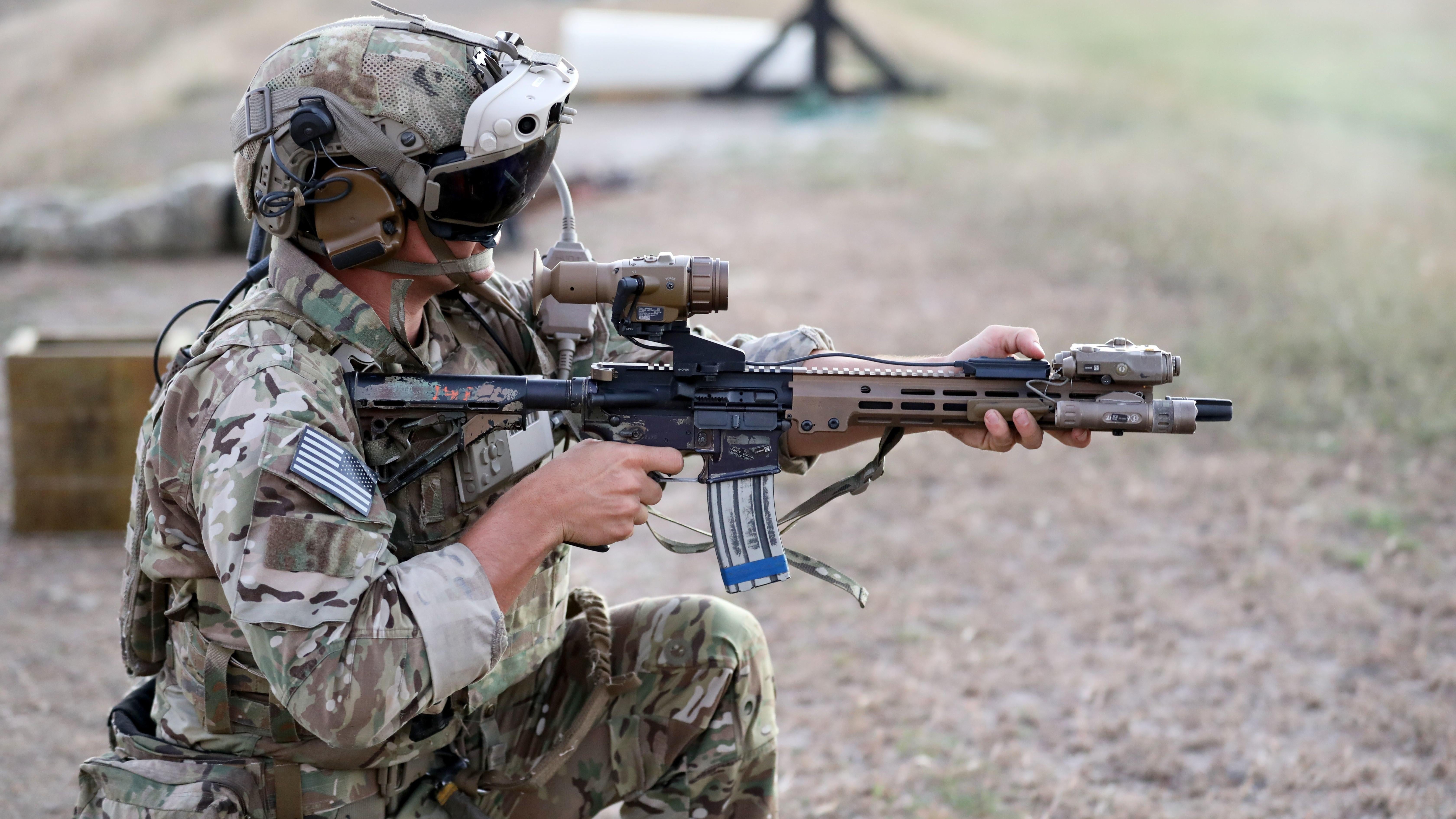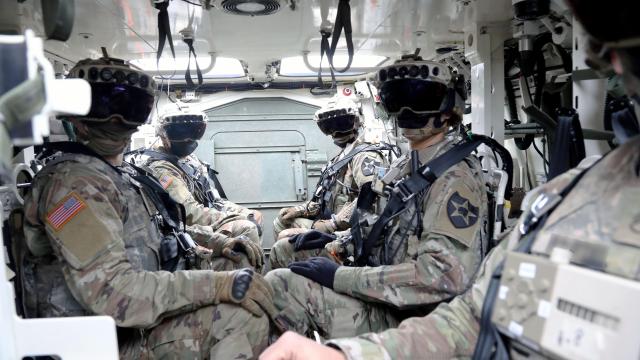U.S. soldiers are experiencing one of mixed reality’s oldest, pervasive problems. Simply put, their Microsoft HoloLens mixed reality headsets make them want to puke.
Soldiers testing out the recently procured devices reportedly experienced nausea, headaches, eye strain, and other “mission-affecting physical impairments” according to summaries of an internal Army report seen by Insider and Bloomberg. Though officials still stand by the technology, the stomach churning accounts cast a shadow over the army’s whopping $US22 ($31) billion HoloLens contract.
Over 80% of the soldiers who experienced symptoms after strapping on the headsets did after less than three hours of use. HoloLens reportedly failed four out of six of the Army’s evaluation tests, with at least one tester expressing concern the device could put soldiers’ lives in danger. Glowing lights emanating from the headset are reportedly visible from hundreds of meters away, a crucial flaw that could potentially give off a soldier’s position during battle.
“The devices would have gotten us killed,” one of the testers said, according to Insider. In addition to the lights, testers claimed the device limited their field of view and restricted their movement due to its bulky, heavy design.
Acceptance of the headsets among soldiers was low with some saying the device did not contribute to their ability to complete missions. In an email to Gizmodo, a Microsoft spokesperson said its relationship with the Army allowed it to move fast and quickly modify the device.
“Our close collaboration with the Army has enabled us to quickly build and iterate on the Integrated Visual Augmentation System (IVAS) to develop a transformational platform that will deliver enhanced soldier safety and effectiveness,” the spokesperson said “We are moving forward with the production and delivery of the initial set of HoloLens-based devices to fulfil our commitment to bring this next generation technology to the US Army.”
Microsoft announced its 10 year, $US21.88 ($30) billion contract with the Army last year to obtain 120,000 Integrated Visual Augmented System (IVAS) headsets. Those devices, custom designed for the military, are based off of Microsoft’s HoloLens mixed reality headset which is primarily tailored towards enterprise customers. The Army’s IVAS version reportedly provides soldiers with a heads up digital map and compass, thermal imagery capabilities, and tools to improve soldiers’ weapon aiming. The Army previously said the device aggregates multiple technologies granting soldiers the ability to fight, train, and rehearse all on a single platform.
IVAS’ rocky road

Both the military and Microsoft seem to have anticipated issues with HoloLens would arise. The army actually pushed back training with the headset for a year last October in order to “further mature” mixed reality technology. Then, earlier this year, an audit conducted by the Department of Defence Inspector General found mixed reactions to the technology by soldiers and warned the Army could wind up, “wasting up to $US21.88 ($30) billion in taxpayer funds.” Microsoft, according to internal communions seen by Insider, has reportedly been bracing for a deluge of negative test results and even expressed concerns the Army could walk away from the contract altogether.
“We (Microsoft) are going into the event expecting negative feedback from the customer,” a Microsoft employee wrote. “We expect soldier sentiment to continue to be negative as reliability improvements have been minimal from previous events.”
The Army, for now at least, looks like it’s committed to pushing on with the headsets. In a summary of the report seen by Bloomberg, Army Operational Test and Evaluation Director Nickolas Guertin, said the headsets still managed to enhance soldier navigation and unit coordination. Guertin also said the devices had improved the mean time between failures that made the devices unusable.
That’s great and all, but many of the most concerning issues noted by soldiers in the report have more to do with the current state of virtual reality headset designs generally. Until those are improved soldiers run the risk of running into firefights with an extremely expensive puke bag wrapped around their heads.
